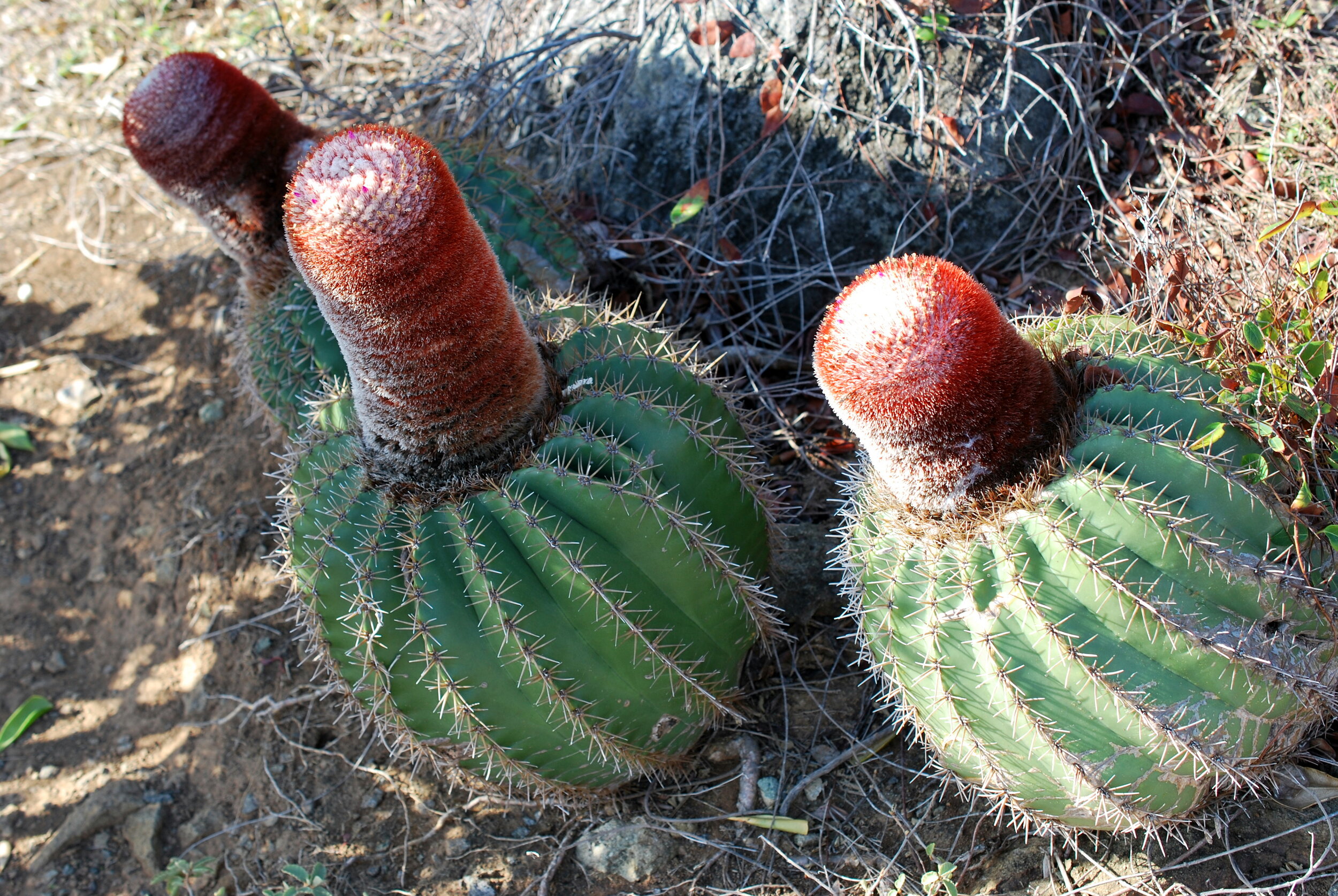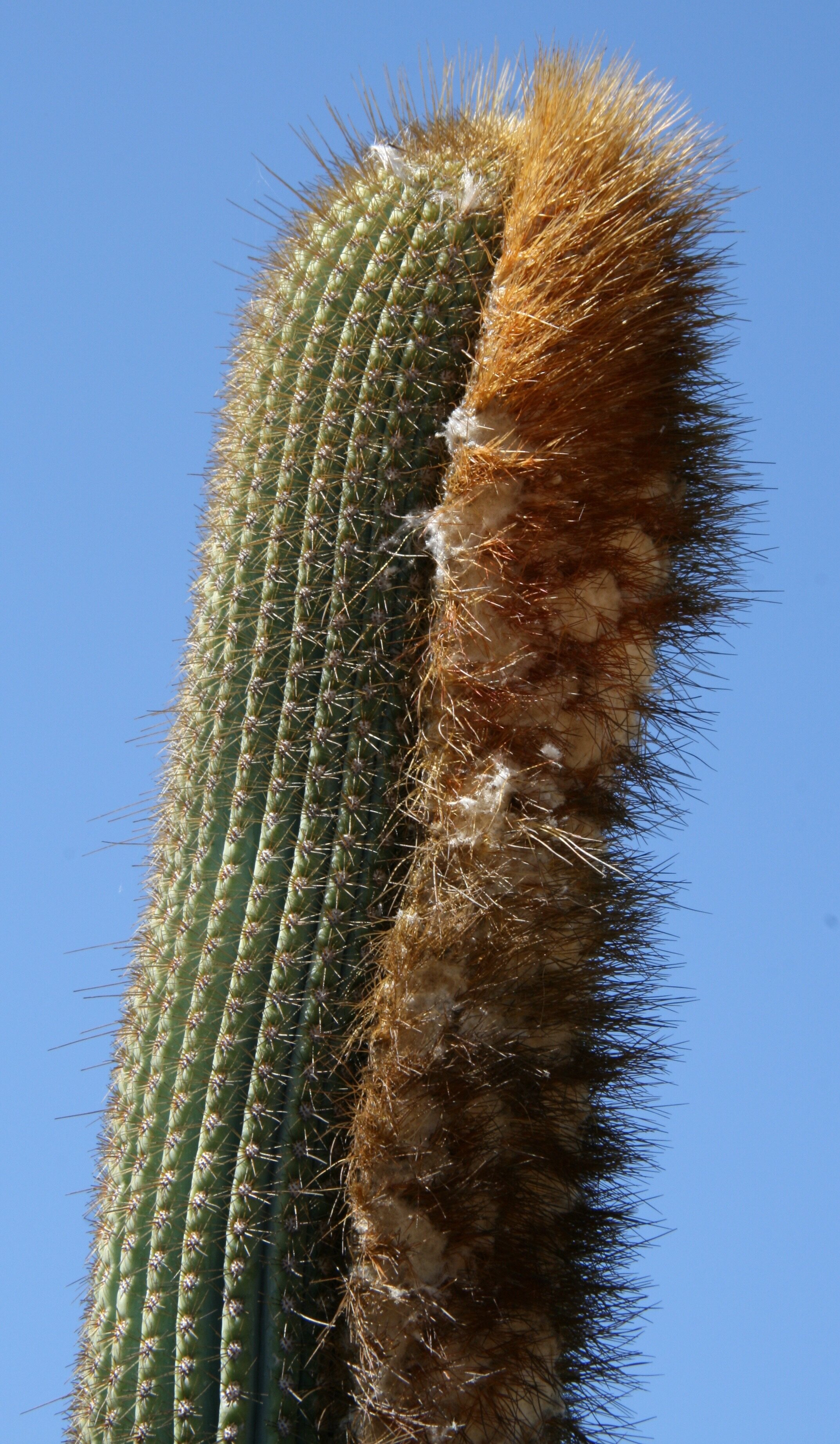Melocactus intortus
Flowers are costly structures for plants to produce. In the flowering plant world, there is always a trade-off between growth and reproduction. Flowers are produced from tiny structures called axillary buds, and many plants can only produce one flush of flowers per bud. Cacti are no exception to this rule and their amazing morphological adaptations to harsh climates has forced them into quite a conundrum when it comes to reproduction.
The axillary buds of cacti are located at the base of their spines in little structures called areoles. This is where the flowers will eventually emerge. However, unlike plants that can produce cheap stems and branches, cacti must produce a whole new chunk of stem or internode before they can produce more axillary buds. Think of it this way, if a cactus wants to produce 10 flowers, it must produce ten internodes to do so. This means producing all of the expensive cortex and epidermis along with it. Their harsh environments have forced most cacti into an extremely tight relationship between growth, water storage, photosynthesis, and flowering that is potentially very limiting from a reproductive standpoint.
Micranthocereus estevesii with lateral cephalium
Amazingly, some cacti have managed to break from this evolutionary relationship and they have done so in a bizarre way. Take a look at all of the cacti pictured here. Each has developed a strange looking structure called a cephalium. Essentially, you can think of the cephalium of a cactus as its “adult” reproductive form whereas the rest of the body consists of non-reproductive, photosynthetic “juvenile” form.
The cephalium is a unique and fascinating structure. It differs from the rest of the cactus body in that it is not photosynthetic. It also produces no chlorophyll and no stomata. In fact, it does not form anything like the epidermis of the rest of the plant. Instead, the cephalium produces dense clusters of short spines and trichomes. Most importantly, it produces tightly packed axillary buds in high abundance. These are the buds that will produce the flowers. The end result is a wacky looking structure that has the ability to produce far more flowers than that of cacti that do not grow a cephalium.
Facheiroa tenebrosa with lateral cephalium
Obviously not all cacti produce cephalia but it is common in genera such as Melocactus, Backebergia, Espostoa, Discocactus, and Facheiroa (this is not a complete list). What the cephalium has done for genera like these is decouple the afore mentioned relationships between growth and reproduction. For a period of time (often many years) following germination, these cacti grow the typical succulent, photosynthetic stems we are accustomed to seeing.
At some point in their development, something triggers these plants to switch to their adult forms. Axillary buds within either lateral or apical meristems switch their growth habit and begin forming the cephalium. It is worth mentioning that no one yet knows what triggers this switch. If the cephalium is produced from axillary buds in the apical meristem like we see in Melocactus, the plant will no longer produce photosynthetic tissues. This represents another major trade-off for these cacti. Such species must rely on the photosynthetic juvenile tissues for all of their photosynthetic needs for the rest of their lives (unless the cephalium is damaged or lost). Backebergia have managed to get around this trade-off by not only growing multiple stems, they will also shed their apical cephalia after a few years, thus re-initiating photosynthetic juvenile growth.
Backebergia militaris with bizarre apical cephalia reminiscent of the bearskin hats of the Queen’s guard.
Things are a bit different for cacti that produce lateral cephalia. Genera such as Espostoa, Facheiroa, and Buiningia are less limited by their cephalia because they are produced along the ribs of the stem, thus leaving the apical meristem free to continue more typical photosynthetic growth. Nonetheless, the process is much the same. Dense clusters of spines, trichomes, and most importantly, axillary buds are produced along the rib, giving each stem a lovely, lopsided appearance.
There are other benefits to growing cephalia in addition to simply being able to produce more flowers. The densely packed spines and trichomes offer the developing flowers and fruits ample protection from both the elements and herbivores. Floral buds are free to develop deep within the interior of the cephalium until they are mature. At that point, the cells will begin to swell with water, pushing the flower outward from the cephalium where it will be exposed to pollinators. As the petals curl back, they offer a safe spot for visiting pollinators that is free from menacing spines. Once pollination has been achieved, the flower wilts and the deeply inferior ovaries are then free to develop within the safety of the cephalium. Once the fruits are mature, they too will begin to swell with water and be pushed out from the cephalium where they will attract potential seed dispersers.
Melocactus violaceus with fruits emerging from the cephalium
I hope that I have convinced you of just how awesome this growth form can be. I will never forget the first time I saw a cactus topped with a cephalium. It was a mature Melocactus growing in a cactus house. Sticking out of the odd “cap” on top was a ring of bright pink fruits. I knew nothing of the structure at that time but it was incredible to see. Now that I know what it is and how it functions, I am all the more appreciative of these cacti.




